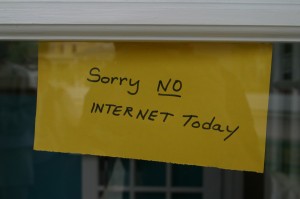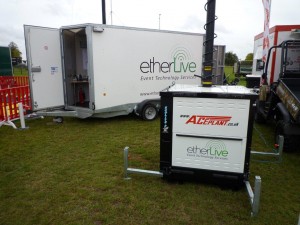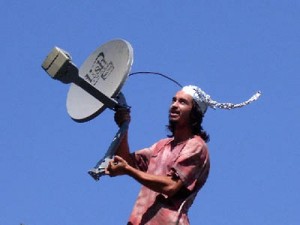
Easter always marks a transition point for us – from delivering service primarily to indoor events to the large scale outdoor events. With Easter chocolate consumed there is a rapid ramp in activity both internally and from our customers as plans are finalised and delivery commences in what becomes a back-to-back run until October.
Every year there is talk of ‘the next big thing’ and exciting technologies on the horizon but in reality at the sharp end of delivery the evolution, rather than revolution, of key services is just as important. So with the summer ramp about to start here are four key event technology areas to focus on.
Connectivity
It all starts with connectivity and if one thing is certain it’s that events need more capacity each year. From the data we have gathered over the last eight years you could probably build a complex theorem about the increase rate but in general we see a need for at least a 25-35% increase year on year, and often more depending on what additional services are required. Lack of internet capacity on site remains one of the most common and frustrating issues at events and this is normally down to a lack of budget or not spotting potential issues like high usage due to a mobile app or streaming.
There are trigger points at which existing services such as ADSL, FTTC (the next generation of ADSL), satellite and certain fibre services become limiting and need to be replaced with higher capacity solutions and many of those services can have significant lead times so it is important to plan connectivity as soon as possible.
Payment Systems
The debate around traditional ‘chip & PIN’, closed loop payment systems (wristbands) and open loop systems (‘contactless’) may be ongoing but it doesn’t really matter which route you choose; attendees, exhibitors and traders simply want payment systems that work.
Early, clear communication on what solutions are available at an event is critical as traders and exhibitors need support through this somewhat complex & confusing area. Expecting mobile GPRS payment terminals to work reliably on a crowded event site is crazy and can have a significant impact on revenue.
System Integration
Each year the integration between different aspects of technology at events becomes more complex and the need to coordinate and manage all the different requirements becomes more important. From the basics of wireless spectrum management & access control, to the adhoc needs of sponsors, audio & broadcasters, each requirement can have an impact on the success of an event so the sooner it is identified the better it can be dealt with.
Safety & Security
The area of safety and security breaks into two areas – the use of technology to help manage and secure the event, and the security of the technology itself.
Sadly, hacking isn’t just something that happens to governments and large companies, it is a continuous real threat. Externally we see frequent attempts to access services and systems from locations such as Russia and China. This is going on all the time across the internet and event sites are just as prone to access attempts as any other internet node.
Risks also exist within an event site, generally from people just trying to access Wi-Fi networks but sometimes the intent is more sinister. With so many critical services running on event networks maintaining appropriate security is essential. Encrypted, managed networks, strong authentication, intrusion detection, client isolation and firewalls are just some of the techniques required to keep the network secure.
Using technology to keep an event site physically safe and secure has become increasingly important over the last few years. The obvious aspect is CCTV with high definition cameras capable of excellent detail and response but there is much more available to organisers. Visibility of real-time access control data from gates, scans of social media streams, Automatic Number Plate Recognition (ANPR) of vehicles entering a site and ‘heat mapping’ of devices across an event site can all be combined to provide an insight to event control of what is happening on site.
Event technology has already come a long way from just being about internet access and it continues to evolve rapidly but this evolution and dependence requires an increased focus on planning to ensure it all comes together seamlessly.





